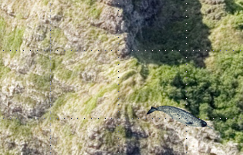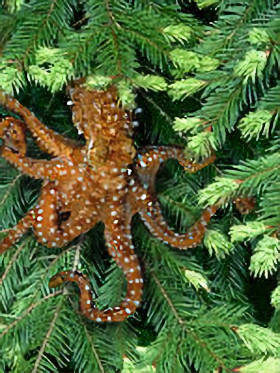What next?
Hopefully, you spotted the clues that the tree octopus isn’t real pretty quickly and pointed this out to your teacher!
We think that by learning some of the skills used to make the fake info on this website, you’ll be better prepared to spot other info like this and know how to check it for accuracy.
We want you to create your own fake animal awareness campaign. You’ll need to think of an animal and then imagine it living in a biome, or habitat, that isn’t it’s natural home… like a mountain-dwelling narwhal or Arctic elephant!
Then you’ll need some facts that sound believable, even though they’re not true – so things like what your imaginary animal eats, where it sleeps and how big it is.
Finally, you’ll create some online content, maybe using slides, websites, blogs or even a video.
You can share these with us on twitter: @DigiLearnScot
Activity 1 – fact finding and note making
- Use your web browser to find out three (or more) facts about an animal
- Then pick a biome it wouldn’t normally live in and find out three facts about that place and how animals normally survive there
- Make notes of this info as you go – it’ll come in handy later
teachers might want to use some of these ideas to expand upon the features of fake news and unreliable sources:
Digital Media Literacy: The Blur Between Facts and Opinions in the Media (gcfglobal.org)
Activity 2 – photo manipulation
The photos on the octopus site were faked and so are many other photos online and in newspapers and magazines too.
Read this page to find out more about manipulated photos
You don’t need fancy software to edit photos, here are some tips:
PowerPoint – remove background
Keynote – instant alpha
- Start with a background photo of the place your imaginary animal is going to live – add it to your app
- Then add the photo of your animal
- Now, use either the remove background in PowerPoint or instant alpha in Keynote, for example, to cut out any background on your animal picture
- It should now look like your animal lives in the place you have as the background
Here’s my mountain-dwelling narwhal from earlier:

Activity 3 – making fake news
You now have an imaginary animal, some facts about it and a photo proving its existence – now all you need to do is put it together and share it with the world to convince them of it’s existence!
You could have a look at these:
https://www.beano.com/games/random-animal-mash-up
https://switchzoo.com/newzoo/zoo.htm
There are lots of great tools for creating and sharing content online, here are just some of them:
Sway
We can’t wait to see your fake news imaginary animals on twitter!
ALL CREDIT FOR THE OCTOPUS CONTENT TO THE SITE’S OWNER: Save The Pacific Northwest Tree Octopus (zapatopi.net)

